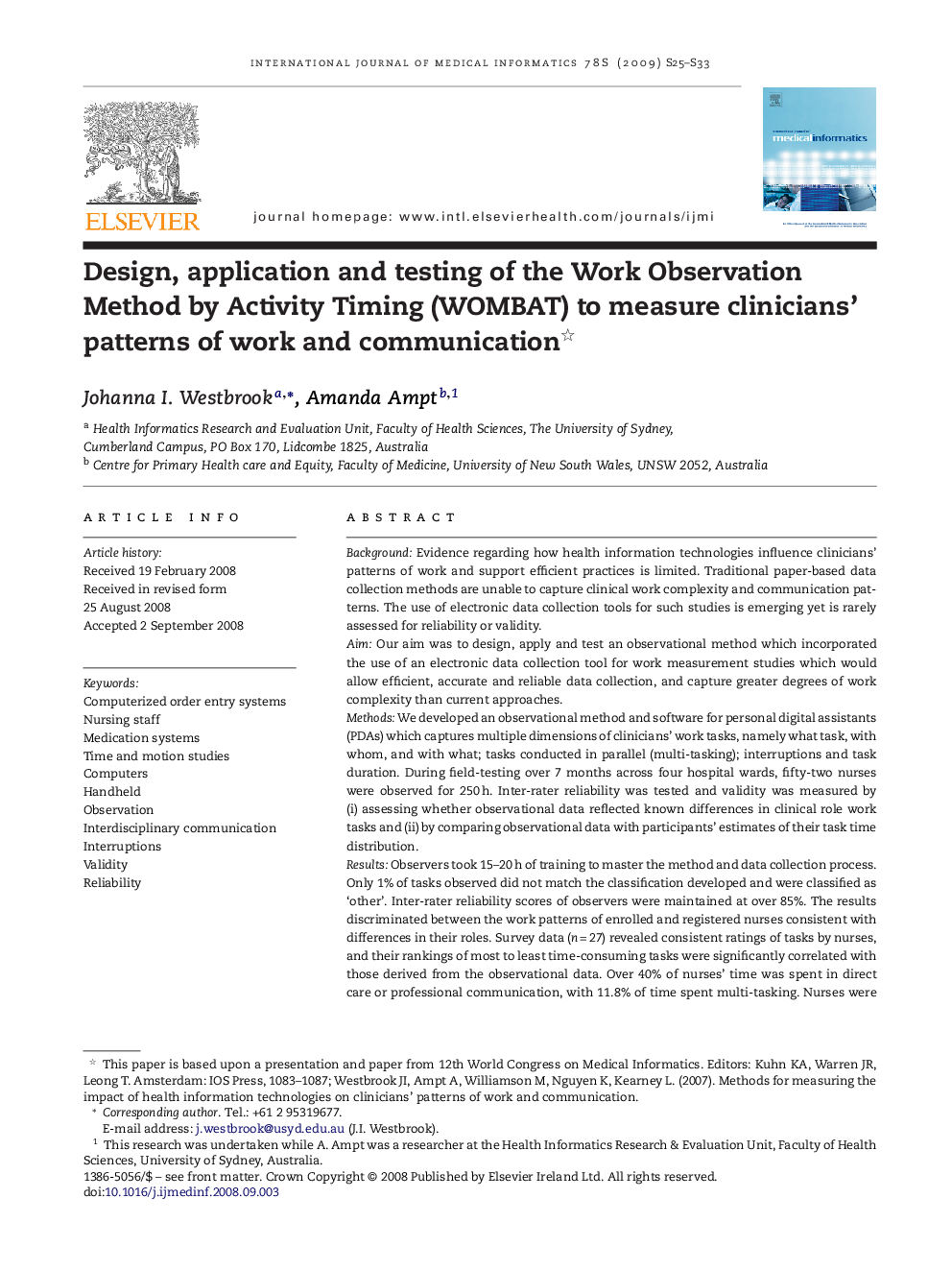| Article ID | Journal | Published Year | Pages | File Type |
|---|---|---|---|---|
| 516382 | International Journal of Medical Informatics | 2009 | 9 Pages |
BackgroundEvidence regarding how health information technologies influence clinicians’ patterns of work and support efficient practices is limited. Traditional paper-based data collection methods are unable to capture clinical work complexity and communication patterns. The use of electronic data collection tools for such studies is emerging yet is rarely assessed for reliability or validity.AimOur aim was to design, apply and test an observational method which incorporated the use of an electronic data collection tool for work measurement studies which would allow efficient, accurate and reliable data collection, and capture greater degrees of work complexity than current approaches.MethodsWe developed an observational method and software for personal digital assistants (PDAs) which captures multiple dimensions of clinicians’ work tasks, namely what task, with whom, and with what; tasks conducted in parallel (multi-tasking); interruptions and task duration. During field-testing over 7 months across four hospital wards, fifty-two nurses were observed for 250 h. Inter-rater reliability was tested and validity was measured by (i) assessing whether observational data reflected known differences in clinical role work tasks and (ii) by comparing observational data with participants’ estimates of their task time distribution.ResultsObservers took 15–20 h of training to master the method and data collection process. Only 1% of tasks observed did not match the classification developed and were classified as ‘other’. Inter-rater reliability scores of observers were maintained at over 85%. The results discriminated between the work patterns of enrolled and registered nurses consistent with differences in their roles. Survey data (n = 27) revealed consistent ratings of tasks by nurses, and their rankings of most to least time-consuming tasks were significantly correlated with those derived from the observational data. Over 40% of nurses’ time was spent in direct care or professional communication, with 11.8% of time spent multi-tasking. Nurses were interrupted approximately every 49 min. One quarter of interruptions occurred while nurses were preparing or administering medications.ConclusionsThis method efficiently produces reliable and valid data. The multi-dimensional nature of the data collected provides greater insights into patterns of clinicians’ work and communication than has previously been possible using other methods.
